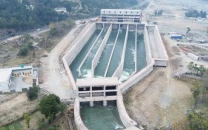Serpent of terrorism raises head again
Pakistan will most likely be faced with alarming threats to its internal security from terrorist organisations

Since the Taliban government assumed office in Afghanistan, many Pakistani analysts thought it was time to heave a sigh of relief as they believed that since the proxies of foreign governments would now be reined in, Afghanistan would no longer be a sanctuary for the Tehrik-e-Taliban Pakistan (TTP). The Afghan Taliban also offered to mediate between the Government of Pakistan and the TTP leadership, which resulted in a month-long ceasefire. According to the Taliban spokesperson, the initial agreement guaranteed the release of 102 TTP prisoners by Pakistani authorities. The prisoners were to “be released to the TTP through the Islamic Emirate on November 1” along with their other top five leaders, and cases against them were to be withdrawn. Among the various conditions, enforcement of Shariah and the restoration of tribal areas to their pre-merger status were demanded.
In return, the government demanded a comprehensive peace all over Pakistan; TTP’s obedience to the Constitution; no grouping, re-grouping or terrorist safe havens; and movement of armed troops. The information minister, sounding hopeful, announced that the Government of Pakistan and the banned TTP had agreed on a complete ceasefire which would be extended as the talks progressed. The process of talks, however, could not lead to a logical conclusion, perhaps due to widespread criticism and Supreme Court’s observation, “… if the government was going to sign on a document of defeat with those who killed these children. Are we going to surrender once again?”
As a reaction, Mufti Noor Wali Mahsud, the Amir of TTP, announced the end of the ceasefire and asked his fighters to resume attacks. With this, the serpent of terrorism has again raised its head as many incidents of attacks on security forces and police officials have occurred. Pakistan will most likely be faced with alarming threats to its internal security from terrorist organisations like TTP, ISIS and various splinter groups.
In a recent report by the Institute for Conflict and Security Studies, a Pakistani watchdog, approximately 294 terrorist attacks occurred in 2021. About 56% increase has been observed in the number of incidents over the last several years. The highest number of attacks were carried out in Balochistan and Khyber-Pakhtunkhwa, especially in the newly merged districts. Pakistan Security Report 2021, issued by Pak Institute for Peace Studies (PIPS) also revealed similar statistics. These acts of terrorism have claimed 335 lives, a sharp increase over the previous year. Most of the analysts attribute this spike to the Taliban takeover in Afghanistan.
The recent arrest of 10 terrorists belonging to the banned TTP, Al-Qaeda, and Islamic State, along with a huge cache of weapons from various areas such as Toba Tek Singh, Okara, Gujrat and Sargodha districts of Punjab is an evidence of the vast networks operating all over Pakistan. This is also a proof of these organisations enjoying sufficient physical and social spaces. The militants carrying out terrorist acts do not emerge suddenly as incubation requires sufficient time. Availability of physical and social space is a must for recruitment, training and execution. Before any overt acts, terrorists remain involved in covert actions, having sleeping cells in cities, well connected with their chain of command. They then wait for the signals for carrying out their missions.
In this context, there is no doubt that the bordering areas of Pakistan form the nucleus of the militant network operating in Pakistan. Safe havens over there make it possible for them to organise and plan attacks. Although under the Doha Agreement, the Taliban government in Afghanistan is under an obligation to ensure that their soil is not used for terrorism, the situation on the ground has not changed much. Therefore, the continuation of terrorist activities is a serious challenge for the governments of both Afghanistan and Pakistan. If such acts continue, the Afghan Taliban will lose whatever goodwill they may have in Pakistan. This will also limit the leverage of Pakistan to advocate the case of the Taliban government before the international community.
Although a considerable decline in acts of terrorism has been observed since 2014 due to the use of the kinetic energy of the state, the underlying causes have not been addressed. The root cause is the absence of the rule of law. Moreover, the various institutions tasked with countering terrorism do not act in sync with each other. In this connection, the police are the first responder and have a presence in every nook and corner. They, however, do not act on a day-to-day basis in order to nip the evil in the bud.
Terrorism is an existential threat. All national institutions that have gained rich experience of using technical and human intelligence must act in unison to crush the serpent of terrorism before it is too late. The best policy option is denying potential extremists any social and physical spaces. This can be done by implementing the 20 points of the National Action Plan in letter and spirit. If we fail to act, we would be providing the US the pretext to exercise her right of counterterrorism, as stated in the annexures of the main text of the Doha Agreement.
Published in The Express Tribune, January 12th, 2022.
Like Opinion & Editorial on Facebook, follow @ETOpEd on Twitter to receive all updates on all our daily pieces.













COMMENTS
Comments are moderated and generally will be posted if they are on-topic and not abusive.
For more information, please see our Comments FAQ